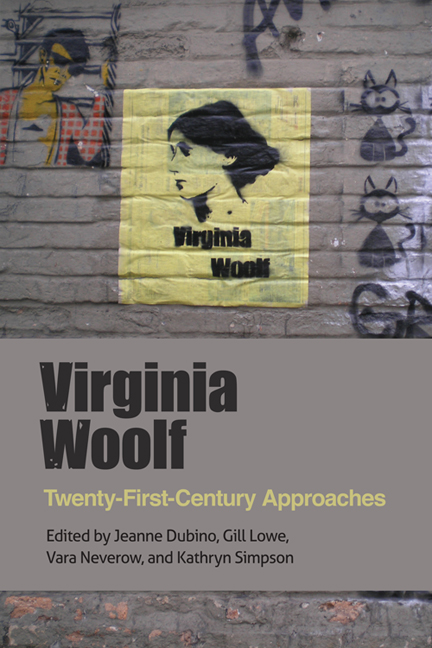Book contents
- Frontmatter
- Contents
- Acknowledgements
- Contributors
- Abbreviations
- Introduction
- PART ONE Self and Identity
- PART TWO Language and Translation
- PART THREE Culture and Commodification
- PART FOUR Human, Animal, and Nonhuman
- PART FIVE Genders, Sexualities, and Multiplicities
- 9 Indecency: Jacob's Room, Modernist Homosexuality, and the Culture of War
- 10 Multiple Anonymities: Resonances of Fielding's The Female Husband in Orlando and A Room of One's Own
- 11 Two-Spirits and Gender Variance in Virginia Woolf's Orlando and Louise Erdrich's The Last Report on the Miracles at Little No Horse
- Index
9 - Indecency: Jacob's Room, Modernist Homosexuality, and the Culture of War
from PART FIVE - Genders, Sexualities, and Multiplicities
Published online by Cambridge University Press: 05 August 2016
- Frontmatter
- Contents
- Acknowledgements
- Contributors
- Abbreviations
- Introduction
- PART ONE Self and Identity
- PART TWO Language and Translation
- PART THREE Culture and Commodification
- PART FOUR Human, Animal, and Nonhuman
- PART FIVE Genders, Sexualities, and Multiplicities
- 9 Indecency: Jacob's Room, Modernist Homosexuality, and the Culture of War
- 10 Multiple Anonymities: Resonances of Fielding's The Female Husband in Orlando and A Room of One's Own
- 11 Two-Spirits and Gender Variance in Virginia Woolf's Orlando and Louise Erdrich's The Last Report on the Miracles at Little No Horse
- Index
Summary
In a famous scene at the centre of Virginia Woolf's Jacob's Room, Jacob Flanders with assistance from his friend Richard Bonamy composes his ‘essay upon the Ethics of Indecency’ (JR: 79) to challenge the sexual repression, control, and censorship of Edwardian society and its institutions. Enraged by Professor Bulteel who ‘disembowelled’ ‘indecent words and some indecent phrases’ (70) from his edition of Wycherley, Jacob and Bonamy invoke Lucretius, Aristophanes, and Shakespeare throughout to condemn the idiocy of Bulteel and all he represents. Conveying the kind of outrage, scorn, and derision that Woolf would later employ in Three Guineas, Jacob reverses Bulteel's defence of these excisions to expose the ‘sheer prudery’, ‘lewd mind[s]’, ‘disgusting nature’ (70), and fundamental indecency of modern morality.
Celia Marshik analyses the tension in Woolf's writing between disdain for censorship and ambivalence about indecency, showing how Woolf defends and transvalues indecency in Jacob's Room by humanising the characters who are prostitutes and denouncing moral purity. Marshik concludes that Woolf remains ‘unwilling to put “raw” indecency in her novel’ (2006: 112). Susan C. Harris contends that Woolf deliberately includes as one of her multiple narrative voices a censorious narrator to reflect the policing of sexuality as a central theme in Edwardian literature. Through this voice, Woolf shows how homophobia ‘operates in Jacob's Room both within and outside the academy. To protect itself, the academy must conceal from itself and from outsiders the redirection of sexual desire on which its continued dominance depends’ (Harris 1997: 432). Thus the academy refuses to publish Jacob's essay that instead is sealed in a coffin-like box that anticipates Jacob's own death as a catastrophe of war. ‘The lid shut upon the truth’ in the ‘black wooden box, upon which his name was still legible in white paint’ (JR: 71). Poignantly, in the holograph draft of the novel, Jacob's wooden box also contains ‘a great many photographs of young men’ (Woolf 2010: 79), the generation of Cambridge lovers who will be lost in the war.
- Type
- Chapter
- Information
- Virginia WoolfTwenty-First-Century Approaches, pp. 169 - 186Publisher: Edinburgh University PressPrint publication year: 2014



